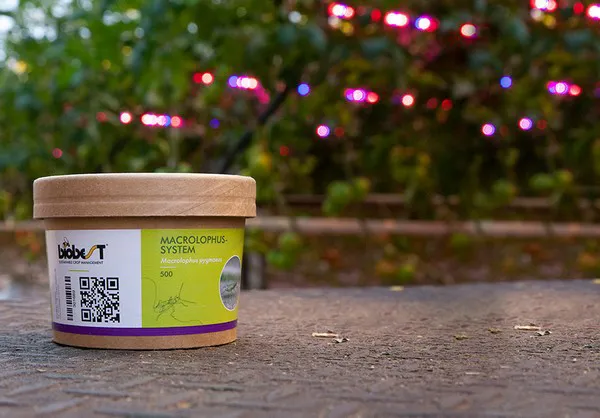A new full-field feeding strategy for Macrolophus-System is helping optimize whitefly control in tomatoes and sweet peppers - by delivering further gains in predator activity and spread throughout these crops.
"At Biobest, we constantly strive to optimize the performance of our products," explains Ines De Craecker, Product Manager of Beneficials. "Our new and improved sustainable packaging for Macrolophus-System is already delivering a raft of tangible benefits to growers across Europe."

"Introduced in 2022, the cardboard carton contains honeycomb paper to protect the sensitive, delicate winged mirid bug, while a gel formulation provides water for the adults during transit. Enhancing bug activity, it has led to improvements in whitefly control while making predator release easier and faster - helping save labor. 100% biodegradable, the carton can also be left in the crop, reducing growers' waste disposal costs."
New full-field strategy
"The release strategy for Macrolophus-System remains unchanged," explains Arno Hellemons, IPM and Pollination Specialist. "Growers should continue to standardize release - selecting the middle row of each bay. Having removed the lid, the carton should be slowly moved along the middle row, so the predatory bugs can fly out into the crop."
"The new packaging has brought improvements in Macrolophus activity, which means predators are now immediately dispersing across the width of the bay. As a result, we have developed a new full-field feeding strategy."
"This centers on reinforcing Macrolophus development by blowing protein-rich Nutrimac™ Plus supplementary feed along the release rows for 4-6 weeks after the first introduction at a recommended dose rate of 500-1.000 gr/ha/week. Meanwhile, we recommend dispensing Artemac™ at the same dose rate for 6-8 weeks along all other rows to help create a standing army of predators in the crop."
"Adopting this new full-field feeding strategy, growers will give a further boost to overall Macrolophus activity, encouraging this important predatory bug to spread out in the crop – leading to further improvements in whitefly control in tomatoes and sweet peppers."
